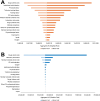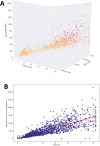Cost savings of a nationwide project preventing healthcare-associated infections in adult, paediatric and neonatal critical care settings in Brazil: a micro-costing study
- PMID: 40233957
- PMCID: PMC12004500
- DOI: 10.1136/bmjopen-2024-097515
Cost savings of a nationwide project preventing healthcare-associated infections in adult, paediatric and neonatal critical care settings in Brazil: a micro-costing study
Abstract
Objective: To provide evidence of the cost savings of a quality improvement (QI) initiative preventing healthcare-associated infections (HAIs) in critical care settings.
Design: A micro-costing study focused on financial data related to a nationwide multicentric project preventing central line-associated bloodstream infection (CLABSI), ventilator-associated pneumonia (VAP) and catheter-associated urinary tract infection (CAUTI).
Setting: Brazilian public healthcare system.
Participants: Adult, paediatric and neonatal intensive care units (ICUs) participating in the QI initiative.
Intervention: This collaborative QI project implemented a multifaceted strategy to enhance infection-control measures. Participating ICUs reported the number of patients with and without HAIs and information on each HAI's aggregate average cost (AC), which was analysed following the Brazilian Ministry of Health's micro-costing guidelines. The 1-year preintervention period evidenced an aggregated AC in adult, paediatric and neonatal ICUs, respectively, of Intl$21 763.5 (95% CI 20 683.6 to 22 843.0), Intl$34 062.4 (95% CI 25 819.6 to 42 304.9) and Intl$32 903.2 (95% CI 29 203.6 to 36 602.4) for CLABSI; Intl$25 202.5 (95% CI 24 276.6 to 26 127.8), Intl$44 753.6 and Intl$17 238.4 for VAP and Intl$19 166.3 (95% CI 17 676.2 to 20 656.1) and Intl$55 873.3 (95% CI 43 563.1 to 68 183.1) for CAUTI (not included neonatal ICUs).
Primary outcome: The cost savings were estimated using the HAIs prevented-expenses avoided-during the QI intervention period from September 2021 to December 2023. The HAIs prevented were estimated using the difference between observed and predicted infections based on the aggregated preintervention baseline.
Results: Of the 188 participating ICUs, 31 voluntarily completed and provided the requested financial data with 100% accuracy. Considering the prevented 7342 HAIs for adult, paediatric and neonatal ICUs, respectively: 1647, 86 and 205 CLABSI; 3775, 114 and 118 VAP; and 1377 and 20 CAUTI, we estimated a saving of Intl$175.3 million (95% CI 153.2 to 180.9 million) to the Brazilian unified health system and a resultant estimated return on investment (ROI) of 890%.
Conclusion: This QI collaborative is a value-based initiative preventing HAIs in adult, paediatric and neonatal ICUs in South American settings. The substantial cost savings and a remarkable ROI underscore the economic viability of investing in comprehensive QI infection prevention strategies.
Keywords: Health economics; Infection control; Intensive Care Units.
© Author(s) (or their employer(s)) 2025. Re-use permitted under CC BY-NC. No commercial re-use. See rights and permissions. Published by BMJ Group.
Conflict of interest statement
Competing interests: None declared.
Figures





References
-
- World Health Organization Global report on infection prevention and control. 2022. https://www.who.int/publications/i/item/9789240051164 Available.
Publication types
MeSH terms
LinkOut - more resources
Full Text Sources
Medical
